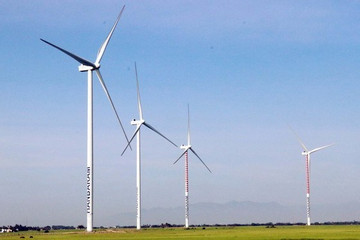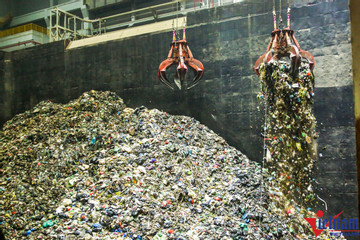- © Copyright of Vietnamnet Global.
- Tel: 024 3772 7988 Fax: (024) 37722734
- Email: [email protected]
vietnam's power industry
Update news vietnam's power industry
Vietnam’s power plan update on hold for 154 solar projects under investigation
In a significant development, 154 solar power projects slated for inclusion in Vietnam's Power Development Plan VIII face delays pending the outcome of a governmental investigation.
Deputy PM orders policy for rooftop solar power development
Deputy Prime Minister Tran Hong Ha on August 13 stressed the significance of consistency in the technical approach as well as economic efficacy while developing a decree on mechanisms and policies to develop rooftop solar power.
500kV circuit-3 power transmission project must be completed by Sept. 2: PM
Prime Minister Pham Minh Chinh has requested ministries, sectors, agencies, and localities to shorten timelines to complete the 500kV circuit-3 power transmission line project by September 2 to celebrate the 79th anniversary of the National Day.
Ministry proposes SOEs pilot offshore wind power development
Vietnam aims to develop 6,000 MW of offshore wind power by 2030, and 70,000 - 91,500 MW by 2050.
Vietnam Energy Outlook Report 2024 launched
With enormous potential for solar power, onshore and offshore wind power, Vietnam is well positioned to transform its energy sector from fossil fuels to renewable energy and leverage its national resources.
How high should renewable-power prices be?
The government of Vietnam needs to set renewables prices at reasonable levels that can benefit investors, EVN and consumers, experts say.
Wind power the fulcrum for renewable energy companies
The share of wind power is targeted to increase significantly, from 5 per cent in 2022 to 19 per cent by 2030 and 29 per cent by 2050.
Rooftop solar power to reduce costs: Ministry
The Ministry of Industry and Trade (MOIT) has been consistent in its view that the major goal of rooftop solar power is self-sufficiency for users, not sales for profit.
Red River Delta, Southeast Region need NA approval for rooftop solar development
In a significant move towards regulating energy initiatives, the Red River Delta and Southeast regions face a new mandate: they must seek approval from the National Assembly to pursue rooftop solar power projects.
Government urged to create legal framework for LNG imports
Experts believe that use of LNG (liquefied natural gas) will continue, but Vietnam still doesn’t have a legal framework on LNG import and business.
Rooftop solar power trading is a no, for now
Vietnam has set a target of having 50 per cent of its office and residential buildings equipped with solar panels by 2030, that is in the National Power Plan VIII.
National Power Development Master Plan for 2021 - 2030 period put into reality
Deputy Prime Minister Tran Hong Ha signed Decision 338/QD-TTg, dated April 24, approving a plan to implement the National Power Development Master Plan for the period of 2021 - 2030, with a vision to 2050 (Master Plan VIII).
Energy industry needs nearly 5 trillion VND of investment in 2021-2030
The total investment capital demand for the whole energy sector in the 2021-2030 period is between 163.01-189.46 million USD, according to a plan to implement the National Power Planning in the 2021-2030 period with a vision to 2050.
Studies underway to guide Vietnam’s energy transition
Vietnam is being encouraged to craft a clear roadmap for the transition of Vietnam’s coal-fired power plants, which are facing risks of closure.
Nam Dinh to change $2 billion coal-fired power project to gas-fired
The transition from a coal-fired to an LNG-fired thermal power plant, according to Nam Dinh provincial authorities, will gradually reduce the number of coal-fired power plants and satisfy environmental protection regulations.
Vietnam Gov’t expects action plan for PDP VIII in early March
The lack of an action plan is impacting the execution of projects and the supply of electricity for both production and consumption.
Power-purchase negotiations may stall investment in waste-to-electricity plants
WTE (waste-to-electricity) is considered a superior solution to solve environmental problems, but it remains unattractive to investors.
Credit contracts worth $634 million signed to implement 500kV transmission line
The National Power Transmission Corporation has signed credit contracts worth over 15.6 trillion VND (634 million USD) with five banks to implement projects to build the 500kV circuit 3 transmission line section from Quang Trach to Pho Noi.
US group to sell its capital in Mong Duong 2 thermo power project
Deciding to totally divest from Mong Duong 2 thermal power project in Quang Ninh province, AES, the US-based energy corporation, said it wants to turn its low-emission goal into reality.
Fuel imports put electricity prices under pressure
A number of countries, including Vietnam, have been facing sharp coal, oil and gas price increases over the last two years.



















